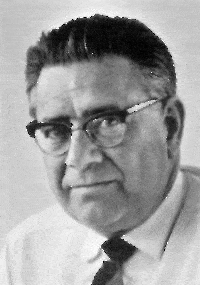Paul Haller Structural Design Award
The Haller Award is given to an individual engineer or an engineering firm that has enhanced the knowledge of masonry in practice. This award recognizes the beauty, elegance, and economy of structural masonry projects. The Award may be presented yearly, although no award needs to be given in a year.
Deadline
Nominations are due by June 30th each year.
Professor Paul Haller was a dynamic engineer who helped revolutionize the design of structural masonry. Haller was born on March 7, 1902 in Zurich, Switzerland. He was formally educated at the Federal Technical University in Zurich, graduating in 1924.
After graduation, Haller worked as a practicing design engineer for several years, and then he joined the Swiss Federal Laboratory for Materials and Research. While there, he conducted extensive testing on masonry walls because after the second World War, concrete and steel materials were scarce throughout Europe. During his career, he tested over 1600 brick masonry walls, and the data from those experiments were used in the design and construction of an 18-story load-bearing brick building that consisted of walls from 12 to 15 inches in thickness. Such tall, thin walls caused nothing less than a revolution in the structural use of masonry since for the first time, a rational design method for structural masonry became possible.
In 1949, Professor Haller joined the engineering faculty at his alma mater and he became a full professor in 1966. Professor Haller retired in 1967 to enter private practice as a forensic engineer. In 1987, he died at the age of 85.

Recipient Summary
- 2024: Jason Thompson
- 2023: Paul G. Scott
- 2022: Raymond T. Miller
- 2021: John M. Hochwalt
- 2020: Thomas Corcoran
- 2019: Thomas A. Gangel
- 2018: Scott W. Walkowicz
- 2017: Chukwuma Ekwueme
- 2016: Samuel M. Rubenzer
- 2015: Benchmark H. Harris
- 2013: David T. Biggs
- 2012: John G. Tawresey
- 2011: Edwin T. Huston
- 1999: Whitby Bird and Partners
- 1996: James M. Cutts
- 1993: VSL Corporation
Related News Articles
- Jason Thompson Recognized with 2024 Haller Award
- 2023 Haller Award Presented to Paul G. Scott
- 2022 Haller Award Presented to Raymond T. Miller
- 2021 Haller Award Presented to John Hochwalt
- 2020 Haller Award Presented to Tom Corcoran
- 2019 Haller Award Presented to Tom Gangel
- 2018 Haller Award Presented to Scott Walkowicz
- 2017 Haller Award Presented to Chukwuma Ekwueme
- 2016 Haller Award Presented to Samuel M. Rubenzer
- 2015 Haller Award Presented to Benchmark H. Harris
- 2013 Haller Award Presented to David T. Biggs
- 2012 Haller Award Presented to John G. Tawresey
- 2011 Haller Award Presented to Edwin T. Huston
- Whitby Bird and Partners receive 1999 Haller Award for work on Winterton House
- 2008 TMS Service Awards presented to Ben Harris, Paul Hoggatt & Mark McGinley
- VSL Corporation receives 1993 Haller Award for work on Holy Cross Church
